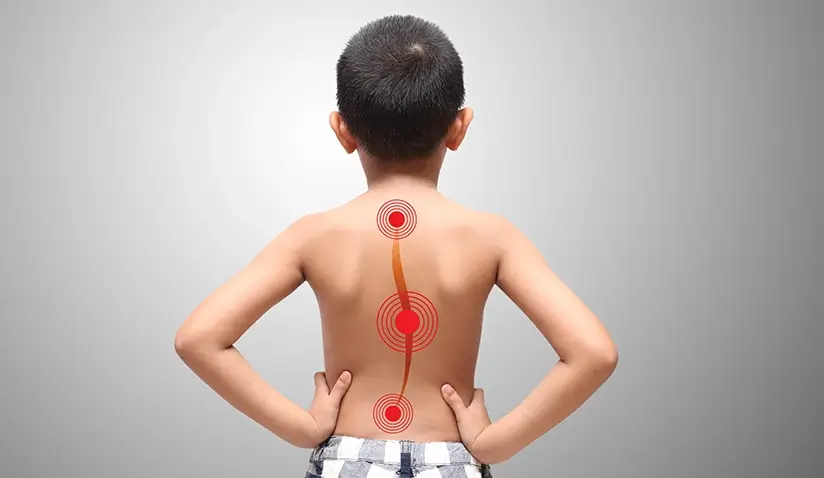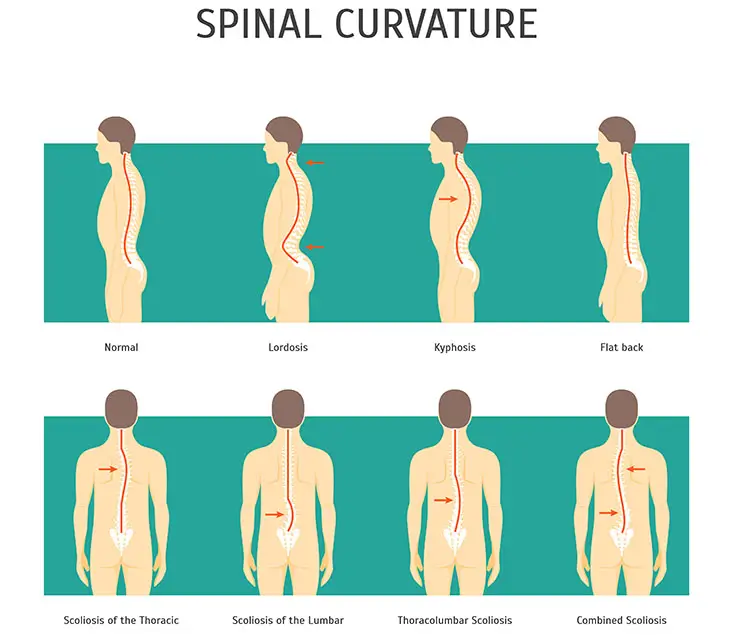Scoliosis and Kyphosis Surgery for Children – New Innovations

Spinal deformities affect thousands of children and adolescents worldwide. Scoliosis and Kyphosis (also called Kelso’ hunchback and Roundback) are the most common types of spinal deformities.
Of the different types, Idiopathic Scoliosis, with no identifiable cause, is the most common accounting for 80% of the cases. This type is most commonly diagnosed among adolescents between 11-18 years of age. Irrespective of age, scoliosis has been shown to affect females more than males.
Statistics also reveal that German children are at a higher risk of developing scoliosis due to genetic factors. Kyphosis, on the other hand, affects the elderly more. The risk increases with age, especially after the age of 40 with a prevalence of 20% to 40% in adults over 60 years of age. Although it affects both genders, the condition progresses faster in women, especially during menopause.
The word “scoliosis” means the lateral curvature of your spine i.e. the letter C-shaped. “Kyphosis” on the other hand, is the excessive forward curvature of your spine, thus termed Kelso’s hunchback. Deformities in both curvatures often develop in childhood or early adolescence. Scoliosis and kyphosis are usually accompanied by mild back discomfort. Early diagnosis and intervention are essential to stop the progression of spinal deformities.
Can Scoliosis be Fixed?
Traditional surgery for kyphosis and scoliosis, such as spinal fusion and osteotomy, are reliable treatments for spinal deformity correction.
However, innovations in surgery have brought about new scoliosis surgery treatments, including vertebral body tethering (VBT). VBT is becoming increasingly popular because of its minimally invasive approach and lower complication rate.
When Is Surgery for Scoliosis Needed?
For severe scoliosis cases, an early surgery is generally indicated on the ground that:
- Curves exceeding 50 degrees will progress even after a child reaches skeletal maturity.
- Curves of greater magnitude may compromise breathing or cause respiratory failure.
- If the curve progresses, it becomes more challenging to treat with surgery.
The primary goals of surgical intervention for scoliosis are to reduce spinal deformity and prevent the curve from progressing. Children and adolescents must be observed through a criterion before they are eligible for surgery.
We recommend surgery for scoliosis in children if:
- The spinal curve is greater than 40 degrees.
- The patient’s scoliosis is showing signs of progression.

Types Of Scoliosis Surgery
Spinal Fusion
Spinal fusion for scoliosis is the process of welding together your vertebrae (the bones of your spinal column), usually using bone grafts. Bone grafts can be taken from the spine, ribs, or pelvis.
Typically, getting bone graft material from the spine is less painful than extracting it from other locations.
Spinal fusion can be done using a posterior or anterior approach.
Posterior Approach
During spinal fusion, the patient lies on their stomach, and the neuro-orthopedic surgeon makes an incision down the back. The surgeon will then attach rigid metal rods to straighten and secure the spine during the fusion. The bone graft will then be inserted in the space between the treated vertebrae to fuse them together.
Anterior Approach
For the anterior approach, the patient is placed on their side. The surgeon makes an incision on the side, deflates the lung, and removes a rib to access the spine.
Video-Assisted Thoracoscopic Surgery (VATS)
Video-Assisted Thoracoscopic Surgery (VATS) can be used to treat the thoracic vertebra. That’s the part of your spine which runs from the base of your neck to your abdomen. It’s considered a minimally invasive scoliosis surgery.
The surgeon creates small incisions on the side of the chest wherein they insert a camera device that allows them to view the spine. During VATS, they temporarily deflate one of the lungs to install rods or screws that straighten the spine.
Although it is a less invasive surgery for scoliosis, not all patients may be candidates for VATS because lung deflation is needed.
Osteotomy
Osteotomy is a type of scoliosis surgery that involves the surgical removal of the affected bones. The surgeon will realign the vertebrae and use implants to correct the spinal deformity. It typically includes a bone graft that fuses the vertebrae to form a solid bone structure for long-term stability.
Osteotomy is usually considered a surgical treatment for kyphosis, scoliosis, and flat back.
Vertebral Body Tethering (VBT)
Vertebral Body Tethering is the latest innovative scoliosis surgery. VBT is an advanced surgical treatment that uses non-fusion spinal technology to treat idiopathic scoliosis.
VBT through Vertebral Body Growth Modulation Technique is a minimally invasive technique that minimizes the need for spinal fusion and revision procedures.
During VBT surgery, the neuro-orthopedic surgeon will attach a tough flexible cord, called a tether, on the side of the spinal curvature. It will be anchored with a set of metallic bone screws. The surgeon will then apply slight tension to the tether to straighten the spine. Over time, as the child grows, the tension will gradually increase, forcing the spine into assuming a normal curvature.
Vertebral body tethering is one of the most advanced minimally invasive surgeries for scoliosis in pediatric patients with excellent success rates.
Choosing The Right Surgery
While traditional scoliosis surgeries are reliable options, vertebral body tethering is rapidly becoming the preferred method for scoliosis treatment in children and adolescents.
VBT has a lower complication rate and can significantly prevent the progression of the deformity in children compared to older surgical techniques for scoliosis.
With the advancements in spinal corrective surgery, neuro-orthopedic surgeons are more inclined to recommend VBT because of its many advantages. It preserves the spinal motion, leads to greater three-dimensional correction of the deformity, and requires less recovery time.
Although this is a new method for scoliosis treatments, clinical trials have proven VBT as a safe and effective treatment for idiopathic scoliosis in children.
Several factors determine whether your child should get VBT or traditional scoliosis surgery. An interdisciplinary surgery team will help you choose the best option.
How To Prepare for Scoliosis Surgery?
Preparation for scoliosis surgery typically includes a physical examination and imaging tests to confirm the diagnosis.
Before surgery, screening for scoliosis might comprise a bend test to detect any asymmetry of the trunk or abnormal spinal curvatures.
X-rays, computed tomography (CT) scans, and magnetic resonance imaging (MRI) provide diagnostic imaging of the bones and surrounding structures to determine the exact type of scoliosis and the severity of the spinal deformity.
If you have questions regarding the procedure, it’s best to bring them up with your child’s neuro-orthopedic surgeon before the operation.
Recovery After Scoliosis Surgery
After scoliosis surgery, your child will be admitted to the hospital for about 3 to 4 days for recovery and observation. Most children will feel “back to normal” within 2 weeks and return to school. Under the recommendation of your surgery care team, your child must limit vigorous activities for up to 4 months following surgery.
Complications And Risks of Scoliosis Surgery
As with any surgical procedure, vertebral body tethering may have several potential complications:
- Bleeding
- Neurologic deficit
- Postoperative pneumothorax (air leaks into the chest cavity)
- Over-correcting of spinal deformity
- Irritation due to the screws
- Tether breakage
Although surgical complications are rare, choosing a specialized referral scoliosis center would help minimize risks even more.

Sana Hospital Group is the largest privately owned hospital group in Germany with 56 world-class hospitals and more than 2.2 million patients yearly. As top healthcare providers in Germany and Europe, Sana Hospitals such as Sana Hospital Offenbach, Sana Dreifaltigkeits Hospital Cologne and Sana Hospital Rummelsberg, offer a wide variety of surgical treatment options for pediatric and adult spinal deformities.
Several chief physicians in the field of spine surgery and therapy, including Prof. Rauschmann, Dr. Desai and Dr. Vieweg, who have been awarded the Focus Award "TOP Physician", have enormous expertise in surgical and conservative spinal therapy. Complex interventions on the spine, especially in cases of previously unsuccessful spine operations, correction of various spinal deformities (kyphosis, scoliosis, spondylolisthesis), minimally invasive microsurgical operations and disc replacement implantation are also among their areas of expertise.
References:
Featured Blogs



